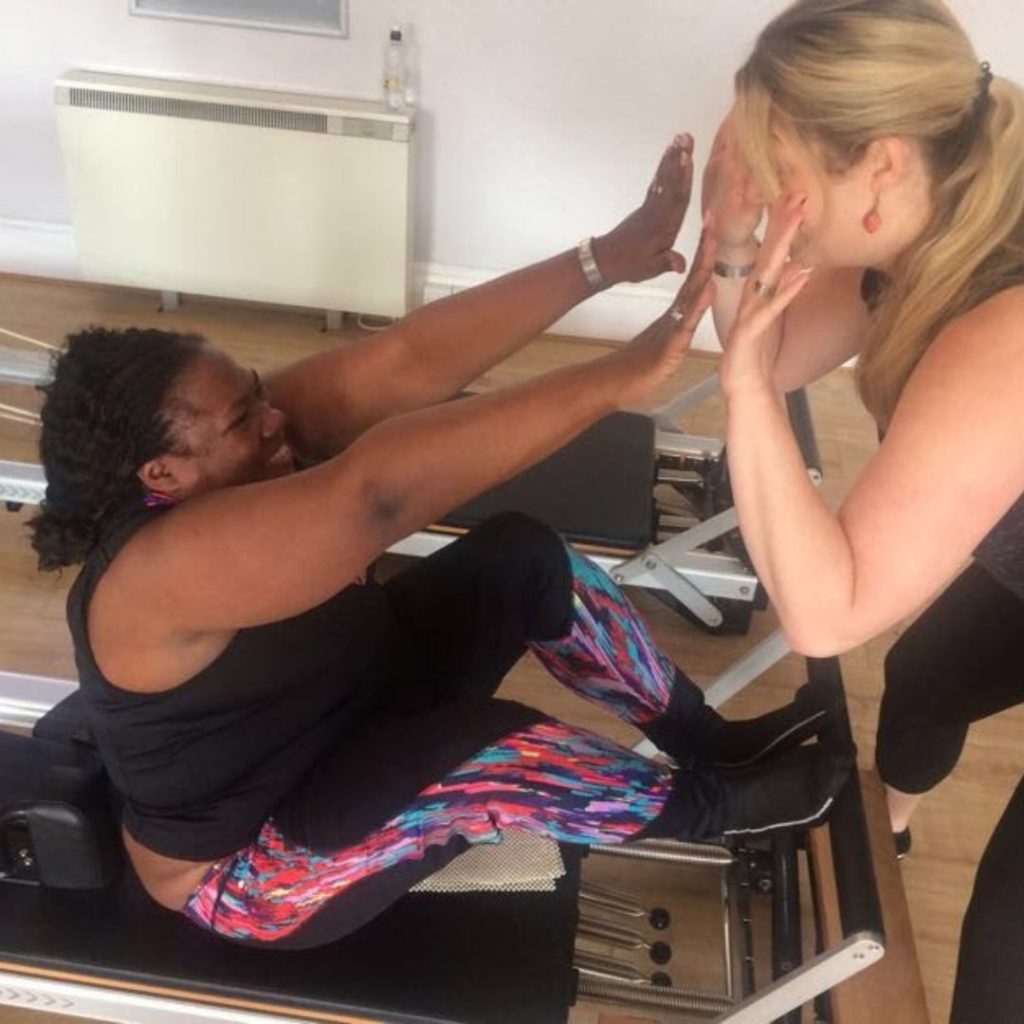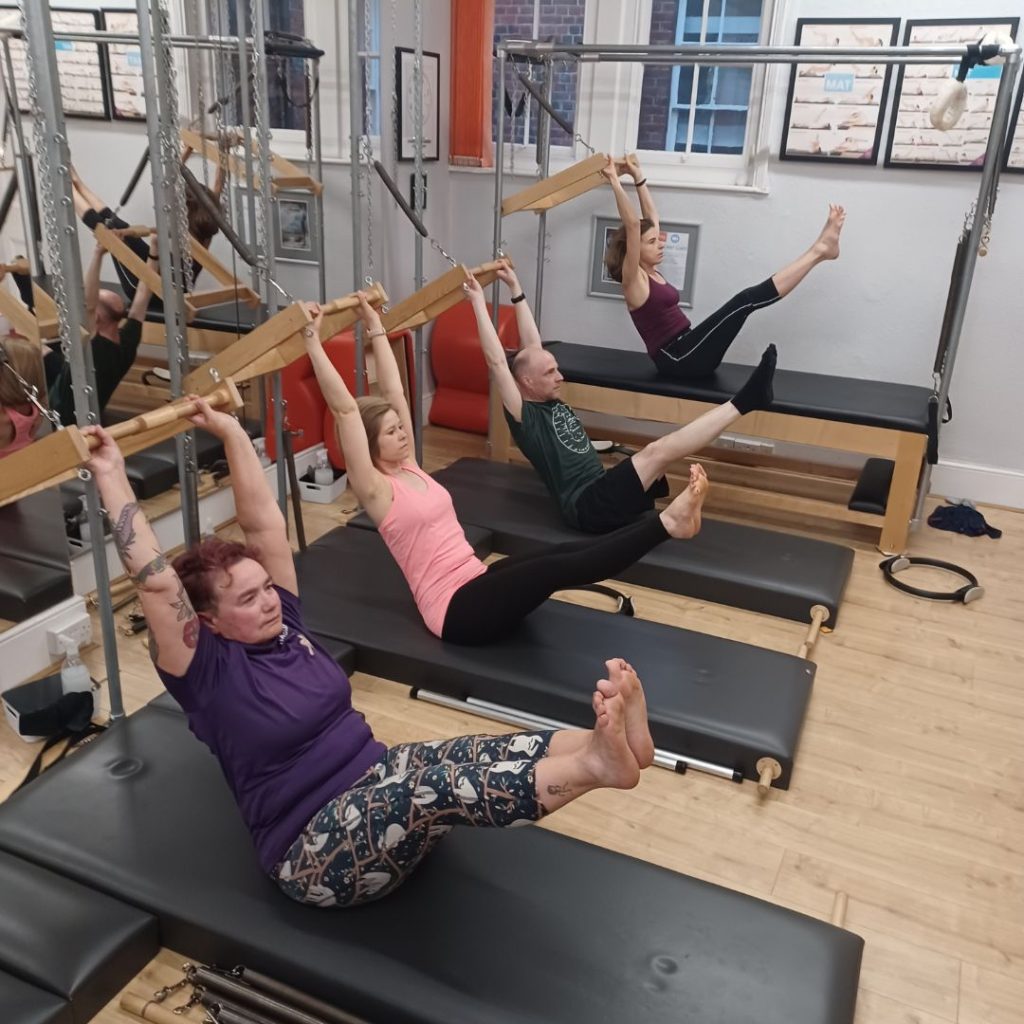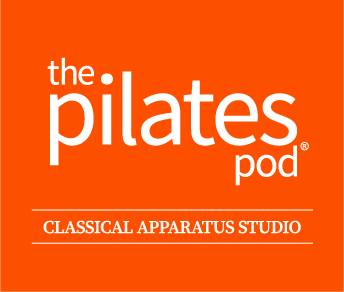
Pilates has been around since the early 1900s, mainly in the world of professional dancers, boxers, and the stars of stage and screen. It has gained huge popularity and took off in the 80’s when one of his devotees opened a studio above a hairdressing salon frequented by Barbra Streisand, Candice Bergen and Ali MacGraw. The stars found themselves drawn to the pastime and a fitness craze was born.
With its proven approach of full body integration and a strong focus on core strength, flexibility, and the mind-body connection, Pilates in the 21st century is definitely here to stay and on the rise.
- It’s the ‘go-to’ recommendation from medical professionals for injury prevention and rehabilitation.
- It’s the cited antidote to desk work, sedentary lifestyles, and spinal wear and tear.
- It’s the ‘must-have’ regime for athletes and sports professionals serious about their careers, longevity, and reducing injury rates.
Whether you’re a Pilates novice or looking to deepen your practice, having the right teacher can make a significant difference in your journey and goals.
Finding the perfect Pilates instructor is about a combination of credentials, experience, environment and finding someone who resonates with your goals, teaching style preferences, and individual needs.
We’ll explore the essential factors to consider when searching for the right Pilates teacher for you.
- Credentials and Experience:
Pilates is an unregulated industry, which means the umbrella term ‘Pilates teacher’ can be said about someone with full comprehensive training on all the apparatus and mat that may have taken up to 2 years to do, as someone who has also taken an online training course, and someone who has just started out in part of the method eg the mat.
- Training to become a teacher should have been received from a school whose Directors and tutors are fully trained in mat and apparatus and can refer you to a comprehensive teacher where appropriate. Be mindful to check that course trainers are not teaching what they are not yet qualified in themselves.
- Training should be received by tutors who are a minimum 5+ years since they completed their training.
- Classical teachers will have also been trained by teachers who can trace back their training and tutors training to a lineage connected directly to Joe Pilates or his proteges Clara Pilates, Romana Kryzanowska, Bob Liekens, Wei Tai Hom, Kathy Grant, Bob Seed, Ron Fletcher, Bruce King, Lolita San Miguel, Carola Trier, Bob Fitzgerald or Mary Bowen.
- Contemporary styles of Pilates may not have this connection to the lineage and have opted for their own interpretation and adaptation of the Pilates metho
- Look for Pilates teachers who are listed on reputable teaching professional bodies who are in partial to training providers, such as the Pilates Teacher Association (PTA) UK or Pilates Method Alliance (PMA) Worldwide, or Pilates Association Australia (PAA) Australia
- Check into which Pilates school they trained with.
A Pilates teacher should be able to offer you personal tuition or small group sessions on apparatus created by Joe Pilates. You will be taught exercises on a mat, reformer, chair, Cadillac, barrel, or many other pieces of apparatus designed specifically to strengthen and stretch the body. This type of teacher is called a “comprehensively trained Pilates Teacher.” and teachers will most often have their own studio or work within a Pilates studio environment or medical environment as opposed to a gym or fitness one.
The training for this is more in-depth and will cover all levels and all apparatus and show how to put the Pilates method together rather than teach lists of exercises or choreography. Sessions will not be set to music, which would disturb the natural flow of the exercises taught as intended. Teachers will have been trained to work with many special populations and injuries such as the elderly, overweight, children, back and neck issues, and shoulder/hip/knee joint problems.
Fully comprehensive Pilates teachers will not normally pre-plan their sessions, allowing the method of Pilates and the system they are trained in to lead and guide the sessions to what is right for that client on the day they see them.
A Matwork or Reformer-only Pilates Teacher may hold a “level 3” general fitness entry-level qualification and is recognized by CIMSPA as a “Pilates Based Pilates Teacher.” The sessions are usually taught mostly in community centres and fitness gyms and will feature adaptations of original mat-based Pilates exercises and allow for more scope for fitness creativity. This may include using non-Pilates apparatus, e.g., bands, balls, or foam rollers, which are fitness items that may have been brought in to supplement a session for fun but are not recognized as Pilates apparatus. Classes are often set to music, choreographed, pre-planned, and may feature aspects focused on the body, i.e., sculpting legs, and are for the healthy attendee with no injuries or special conditions that are best placed within a studio setting.
Anyone holding an existing level 3 fitness qualification, e.g. personal trainer, dancer, or medical professional, e.g., physio, could also qualify to be called a Pilates by simply learning in-house training on certain exercises or pieces of equipment.
2. Class Size and Environment:
- Take time to visit the studio before you book up.
What’s the environment like? Some people may be working on mats in a village hall that may not suit clients who cannot get down to the floor easily or may not like the cold, draughty conditions. Some may be teaching in studios with traditional apparatus that may look scary (but isn’t!) and you may benefit from a little introduction chat if you are anxious.
See how you are greeted and what the atmosphere is like. Studios should be clean, welcoming and have an air of calm.
Don’t be put off hearing grunts and groans common from participants – Pilates is good for the body but it’s not easy so sometimes you hear all sorts of fun noises! - Evaluate the class size
Some people thrive in smaller, more intimate settings, while others prefer the energy of large classes.
Group sessions should really be taught no more than 12 people at a time, with less for apparatus.
Pay attention to the cleanliness, equipment maintenance, and overall atmosphere of the studio. A comfortable and well-maintained environment can contribute to a positive and focused Pilates experience. Are you someone who likes bright colours and positive vibes, then be mindful if you are looking to start Pilates in a dark room, lacking light or dark colours. If black and white is your thing you may vibe off the monochrome and steel look. - Check out the people who go there.
The best Pilates teachers use real life imagery on their social media instead of stock photography. So check it out. Could you fit in here? Is it inclusive looking with different body types? Or are you after something where only dancers go? Is it a place for 20’s or are there people over 50 going too? Do the over-60’s look like they are doing gentle toe taps, or are they being challenged? What do you prefer? What inspires you?
3. Teaching Style and Teacher Rapport:
- Pilates comes in various styles, ranging from classical to contemporary. Some teachers may emphasize traditional Pilates principles, while others incorporate modern fitness techniques. Attend classes, watch videos online, or check out the social media presence to understand different teaching styles and identify the one that resonates with you. Do you want something ‘based upon Pilates’ or does it matter to you to have Pilates taught the way it was intended?
- Whether you prefer a structured and disciplined approach or a more creative and fluid style, finding a teacher whose methods align with your preferences is crucial for an enjoyable and effective experience.
- Personalities that blend well are normally a key to success. The relationship between a Pilates teacher and their student is a crucial aspect of a successful practice. Taking lessons with a Pilates teacher can be incredibly rewarding both physically and mentally, and it is important that you and your teacher work together. Attend introductory sessions and try different potential instructors. Consider their communication style, motivational techniques, and ability to provide constructive feedback. A positive and supportive connection with your teacher can significantly enhance your motivation and overall experience.
Your teacher should always offer an introductory lesson or special intro bundle before you are committed to buying big blocks or memberships. Most studios will have a list of teachers on their websites, so do take time to read their biographies and choose a teacher with whom you think you would enjoy working.
It’s ok to change. If you don’t think you are gelling with a teacher, it’s ok to change! Teachers would rather you get the right fit. In my early days as a Pilates teacher, I might have been slightly offended if clients didn’t like my style, but now I embrace it. At our studio, we have different teachers whose personalities are all different, so it’s great to try out a few in the introduction to Pilates phase before you decide which way to go and who is right for you. When it works, it works, and you will both get something out of it.
The perfect Pilates teacher may not always be what you think you need! If you are anxious and quiet type of person, you may feel you want to work with a gentle teacher who likes to talk with you about your problems and offers quiet stretching and it might be that this is exactly what you want. But often, that same person needs the support of a bigger character in a teacher who has your back and knows when to support and push you, even if it takes you out of your comfort zone. Give teachers a chance to see what works best for your body and your mind!
4. Define your goals
Before embarking on your quest for the ideal Pilates teacher, take some time to define your goals.
All PIlates will help you build core strength, improve flexibility, help with back and joint pain, improve posture, and ultimately make you feel better so they should be on your list as a given.
Think more about the WHY! Why do you want to do Pilates? What will it do for your life in a positive way? Do you want to be able to start running again because your knee injury has stopped you? Do you want to pick up the kids without giving you back pain? Do you want to find an exercise regime that you can do for life without starting a new fad? Do you want to meet people?
Understanding your objectives and your ‘why’ will help you narrow down your search and find a teacher whose expertise and goals aligns with your specific needs.

A point to remember
Pilates is not a substitute for Physiotherapy or other manual “therapies” e.g. Osteopathy, Chiropractic.
The majority of Pilates Teachers are not medically qualifed and cannot prescribe, treat or offer therapy or describe themselves as such.
Pilates was never created and intended to be rehabilitation. It is a workout! You should feel worked out.
You may have health issues, conditions, and injuries that doing Pilates will often naturally help, but if you have a medical condition or require “treatment” for a condition, you should first see a Medical Professional and then you should look for a studio environment and fully comprehensive teachers who will be best placed to give you the support, apparatus and expertise to work with you.
All Pilates Teachers will complete a physical health activity readiness form or screening form (PARQ) and it may be suggested that you see a Medical Professional before they accept you for a lesson.
Pilates teachers should work with medical professional professionals following their advice to tailor the Pilates programme they create for you.
The following is beyond the scope of practice of a Pilates teacher
- 1. “Prescribing” an exercise programme.
- 2. “Diagnosing” a client with any medical, mental or physical condition.
- 3. Continuing to train a client with a condition that is beyond your knowledge without appropriate medical clearance.
- 4. “Prescribing” diets or medication.
- 5. Claiming to “treat” or “rehabilitate” injury or disease.
- 6. Monitoring the progress of clients referred by therapists or medical practitioners by measuring with instrumentation.
- 7. Offering counselling.
- 8. Claiming to be competent to offer professional education beyond the limits of your credentials.
- 9. Applying inappropriate touch.
- 10. Continuing to train a client who exhibits any of the following unusual symptoms: e.g. chest pain, prolonged dizziness, rapid heart rate, shortness of breath, a significant decrease in coordination, loss of consciousness, faintness, nausea, blurred vision, prolonged or increasing pain.
Conclusion:
Finding the right Pilates teacher is a personal journey that involves considering your goals, the instructor’s credentials, teaching style, personal connection, and the class environment. Take the time to explore various options, attend introductory sessions, and trust your instincts. With the perfect Pilates teacher by your side, you’ll not only achieve your goals but also cultivate a deeper appreciation for the transformative power of Pilates in your life.
